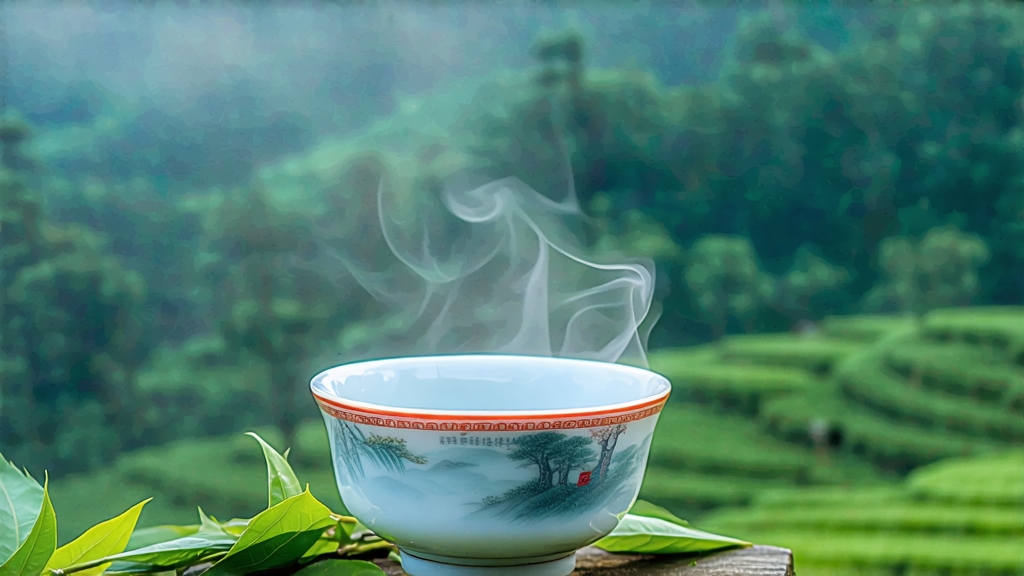
If green tea is spring’s first whisper and pu-erh an autumn library, Alishan High-Mountain Oolong is the moment when clouds kiss granite peaks and turn into liquid orchids. Grown between 1,000 and 1,400 metres on Taiwan’s spine-like mountain ridge, this cultivar—usually Qing Xin or Jin Xuan—absorbs 2,600 mm of mist each year, ultraviolet intensities that thicken leaf cuticles, and diurnal swings that can exceed 15 °C in a single April afternoon. The result is a tea that carries altitude in its veins: slower growth, tighter pectins, and a fragrance that hovers between white peach, lily, and the unmistakable “high-mountain qi” that Taiwanese cuppers simply call “yun.”
Historical roots twist back to the 1855 exodus from Fujian’s Anxi county, when planter Lin Feng-chi ferried Qing Xin cuttings across the Taiwan Strait and planted them first in the lower foothills of Chiayi. The migration upward began under Japanese agronomists in 1907, who mapped Alishan’s acidic laterite soils and noted their uncanny match with Wuyi’s famed rocky terroir. Half a century later, the 1982 liberalisation of tea exports spurred farmers to push ever higher, abandoning the bug-bitten lowland bai hao (oriental beauty) style in favour of the verdant, minimally oxidised oolong that could seduce Japan’s nascent specialty market. By 1999, Alishan had become a protected geographical indication, and its name now adorns everything from hand-painted railway carriages to indie-pop ballads, yet the leaf itself remains the quiet protagonist.
The cultivar palette is small but expressive. Qing Xin (literally “clear heart”) delivers the archetype: jade-green infusion, alpine florals, and a finish that lingers like cool spring water. Jin Xuan (TTES #12), bred in 1981, adds a natural cream note that locals describe as “milk aroma” without any flavouring additives. Four Seasons Spring, a low-elevation offshoot occasionally planted at mid-slope, offers a louder bouquet of gardenia and snap pea, but purists argue it lacks the yun that altitude bestows. Each spring and winter harvest is hand-picked at 40 % oxidation potential, yet the craft bends the leaf toward 15–25 %, preserving chlorophyll while coaxing out lactones that give Alishan its signature milky softness.
Plucking begins at dawn when dew still weighs down the standard “two-and-a-half leaf” pluck; the half-leaf acts as a natural humidity valve during withering. Solar withering on 3 cm wire trays lasts only 20 minutes—just long enough for leaf edges to warm to 28 °C—before the batch is rushed indoors for conditioned withering at 18 °C and 75 % RH. Here, 18-hour drum-turning every 45 minutes bruises cell walls without rupturing them, initiating oxidation that will later be slammed to a halt. The turning room smells like sliced cucumber and steamed rice, a sign that lipoxygenase is converting linolenic acid into cis-3-hexenol, the compound responsible for the tea’s fresh green top note.
Kill-green occurs at 280 °C for 4 minutes in an automated tumbling roaster, hot enough to denature polyphenol oxidase yet brief enough to keep leaf cores turquoise. What follows is Taiwan’s hallmark ball-rolling: the semi-oxidised leaves are wrapped in 12 kg cotton cloth bundles and placed inside a 1,200 rpm mechanical kneader that compresses, rotates, and releases the bundle every 3 minutes. Over 60 cycles across 4 hours, the leaf is gradually shaped into the tight jade-green pearls recognised worldwide. Each pearl still contains 7 % moisture, so a final bake at 90 °C for 3 hours lowers water activity to 3 %, locking in fragrance while caramelising trace sugars that will later bloom in the cup as honeyed orchid.
To brew Alishan properly, think like a mountain climber: respect altitude, temperature, and time. Start with 5 g of leaf in a 120 ml porcelain gaiwan; the thin walls preserve high-notes better than clay. Rinse at 95 °C for 3 seconds to awaken the pearl, discard immediately. First infusion: 92 °